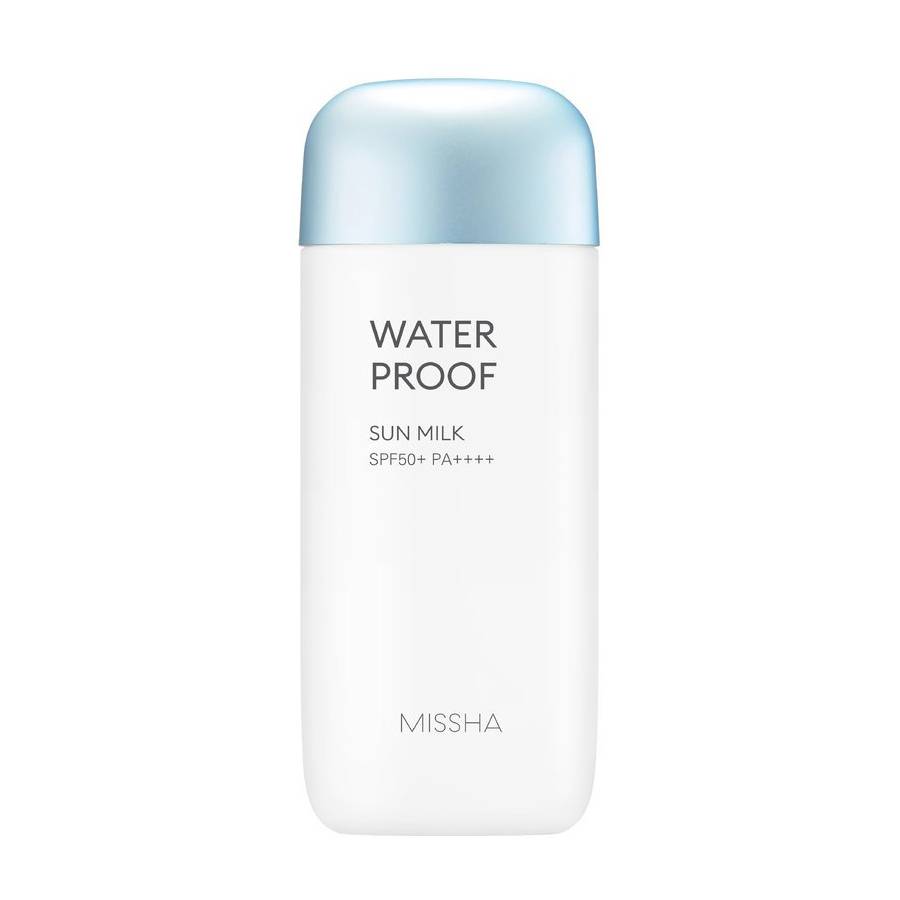There seems to be a lot going on about chemical sunscreens. On the internet you will find a combination of myths, facts and downright fearmongering about chemical agents in sunscreens. I can understand that these stories make you doubtful, and make it harder to choose the right product. After all, you want to use a sunscreen to protect your skin. It makes sense that you want to choose a type of protection that is both safe and effective.
In this blog post, I will try to clear up some uncertainties around chemical sun filters in sunscreens. I hope I can help you make a well-informed decision!

Organic and inorganic sunscreen
There are roughly two kinds of sun filters: organic and inorganic. On the skincare market, the distinction between 'physical' (for organic) and 'chemical' (for inorganic) is often made.
- 'Physical' sun filters or inorganic sunscreen (titanium dioxide and zinc oxide) partially reflect UV-rays. They have solid structures made of alternating sheets of metal and oxygen atoms.
- 'Chemical' filters or organic sunscreens have a mechanism of action that is determined by chains of carbon molecules. The density of these bonds of carbon molecules gives organic sunscreens its UV absorbing properties.
For most of the UV spectrum, both kinds of sunscreens actually work very similarly when it comes to sun protection. But what are the differences for your skin?
As mineral/inorganic sun protection goes, this mostly means that:
- Mineral sunscreens are milder for the skin, but they tend to be a bit drying.
- They are more fitting for people who have a sensitive or oily skin that tends to break out.
- Annoying side effect of mineral sunscreen: they can leave a white cast on your skin.
The common properties of sunscreens with chemical/organic filters are:
- They have slightly more hydrating properties. This can be beneficial to people with drier skin types.
- Chemical filters result in more lightweight substances that are very spreadable on your skin. This is preferable for people with darker skin tones.
- They are airy and light and let your skin breathe, making them very suitable for use during outdoor activities or for when you work out and build up a sweat.
Different skin types, different sun filters. It’s a matter of personal preference and finding out which sun cream is suited to your skin type.

The ‘dangers’ of chemical sunscreen
Chemical/inorganic sunscreen has had some reputation issues over the years. It’s been rumored that 'chemical' sunscreens are dangerous, bad for your health, and even ineffective. So, what’s the deal? Are these stories totally false?
Most of the concerns about sunscreens were about one specific chemical sun filter: oxybenzon. Oxybenzon is a sun filter that provides broad spectrum UV-protection. It has been safely used in sunscreens for over forty years, so you could call it a classic.
Studies have pointed out that oxybenzone is absorbed through the skin, and a really small amount ends up in your body. It has hormonal activities, meaning it mimics estrogen. In 2001 there was a scientific study in which four female rats were given a daily dose of oxybenzone. After four days, their wombs had increased in size. It’s important to note that the given dose was extremely high: every rat got a daily amount of 1500 mg oxybenzone which, if you convert it to the same ratio for humans, would be about 300 liters of sunscreen.
That’s about 35 years worth of sunscreen, and considering that most people don’t cover every inch of their bodies with a thick layer of sunscreen, even more. This makes the risks of topical use of this sun filter virtually non-existent.
A new generation of chemical sunscreen
In recent years, there has been a lot of innovation in the field of chemical/organic agents used in sunscreen. You could call this group the ‘new generation’ of chemical sun filters. The notion that mineral sunscreen is ‘good’ and chemical sunscreen is ‘bad’ is obsolete, as these new generation chemical sun filters combine high protection with excellent safety profiles, minimizing the risk of irritation that sunscreen can cause on more sensitive skin types.
These are some of the leading sun filters of this new generation, and their common properties:
Tinosorb S (Bis-Ethylhexyloxyphenol Methoxyphenyl Triazine)
- Has an excellent safety profile
- Does not show any hormonal activity
- Extremely photo-stable
Tinosorb M (Methylene Bis-Benzotriazolyl Tetramethylbutylphenol)
- A broad spectrum sun filter that protects against UVA and UVB
- Combines the mechanisms of chemical and physical sunscreen by absorbing ánd reflecting UV-rays
Tinosorb A2B (Tris-Biphenyl Triazine)
- Extremely photo-stable, efficiënt UV-A and UV-B protection
- Has anti-inflammatory properties
Uvinul T150 (Ethylhexyl Triazone)
- Especially effective against UVB-rays
Uvinul A Plus (Diethylamino Hydroxybenzoyl Hexyl Benzoate)
- Suited for sensitive skin types: minimal risk of irritation
- Extremely photo-stable
As with many skin care products, the Korean skin care market is a leading innovator when it comes to developing sun screens that combine new generation sun filters with an array of other ingredients that are beneficial to your skin, and/or tackle your specific skin issues.
Purito has several sunscreens that use new generation chemical filters in their formulations. My absolute favorite is the Centella Green Level Unscented Sun SPF50+ PA++++, that’s formulated with niacinamide and Centella Asiatica extracts, both ingredients that my skin loves! My sensitive, oily skin swears by this sunscreen. It calms the occasional redness on my cheeks, and tackles the appearance of enlarged pores on my nose. When applying it, it feels like a light, soothing moisturizer, absorbing easily, leaving my skin feeling calm and soft. I hardly notice that I'm wearing a sunscreen.
Recommended sunscreens with new generation chemical filters:
 |  |  |
| Purito Centella Green Level Safe Sun SPF50+ PA++++ A mild, lightweight sunscreen with hyaluronic acid for additional hydration. | Missha All Around Safe Block Daily Sun SPF50+ PA++++ Formulated with calming herbs. The combination of mineral and chemical sunscreens make this a powerful sunscreen. | Some By Mi UV Shield Daily Mild Suncream SPF50 PA+++ Minimalistic, elegant formula with chemical and mineral sun filters. With marjoram and rosehip-extract. |
 |  | |
| Benton Papaya-D Sun Cream SPF38 PA+++ With panthenol and jojoba oil, both calming, moisturizing ingredients. | Missha All Around Safe Block Waterproof Sun Milk SPF50+ PA++++ Contains extracts of the Italian strawflower, better known as the curry plant. Sweatproof. |
There are a lot of myths regarding sunscreen. What’s definitely not a myth, is that UV-rays are harmful for your skin, causing early aging, wrinkles, pigmentation spots and worse. So whatever sunscreen works best for you: don’t skip this important step in your skin care routine. :)
I hope this post clarified some of the aspects of chemical sun filters. If you know what’s in your sunscreen, you can make a better informed choice. It’s also a question of experiment; what’s a holy grail product for some, doesn’t have to be that for everyone. Don’t let the word ‘chemical’ in chemical sun filters scare you off. Do you know what is also a chemical? Water.
For additional questions, you can always contact us!
XXX, Marthe







 Trending
Trending
 LW Blog
LW Blog










